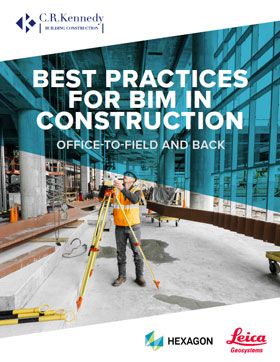Most construction firms are well aware of the benefits of using building information modeling, or BIM, to identify problems before they happen and facilitate more complete building systems integration.

"The building and construction industry is a vital component to the Australian economy. It accounts for 8% of total GDP, includes over 350,000 businesses, and employs over one million people. More broadly it contributes to the health, wellbeing, and standard of living of every Australian; and specifically the advancement of heating, ventilation and air conditioning (HVAC) technologies designed and installed by our AMCA members.
As Australia’s population grows towards the predicted 39 million by 2055, demand for more and better infrastructure is escalating, while the need to avoid lock-in of high-emissions assets is becoming more and more critical. All this occurs against a backdrop of fiscal deficits across the forward estimates, as well as ongoing economic and environmental uncertainty with disruptive consequences for the carbon economy and traditional methods of industrial production.
Today’s construction environment is characterised by shorter building cycles, reduced budgets and growing expectations for accurate data on demand. Although this situation presents numerous challenges for the industry, it also creates tremendous opportunities for firms that wish to differentiate themselves in an increasingly competitive market. We need to be smarter and more innovative about how we deliver construction projects; we need to be smarter and more innovative about how we use and operate assets during their life.
Since 2010, the AMCA has sought to actively promote innovation through our industry-led building information and data standards initiative (BIM-MEPAUS), which aims to improve information capture and communication across the supply chain; thus, allowing industry to focus on value add activities.
Over recent years, the industry has improved productivity largely due to new design technologies and building materials. However, the next frontier of innovation must be a fundamental change in the way information is captured and used throughout the procurement and construction process. Not only will projects be able to be delivered more efficiently, with less waste and at lower cost, but the data captured will transform the way buildings are managed and operated. > >Whether you’re actively embracing BIM or just looking for a way to increase efficiency and transparency on the jobsite, digital layout and capture is a great place to start."
Mr Sumit Oberoi
Executive Director
Air Conditioning and Mechanical Contractors' Association


